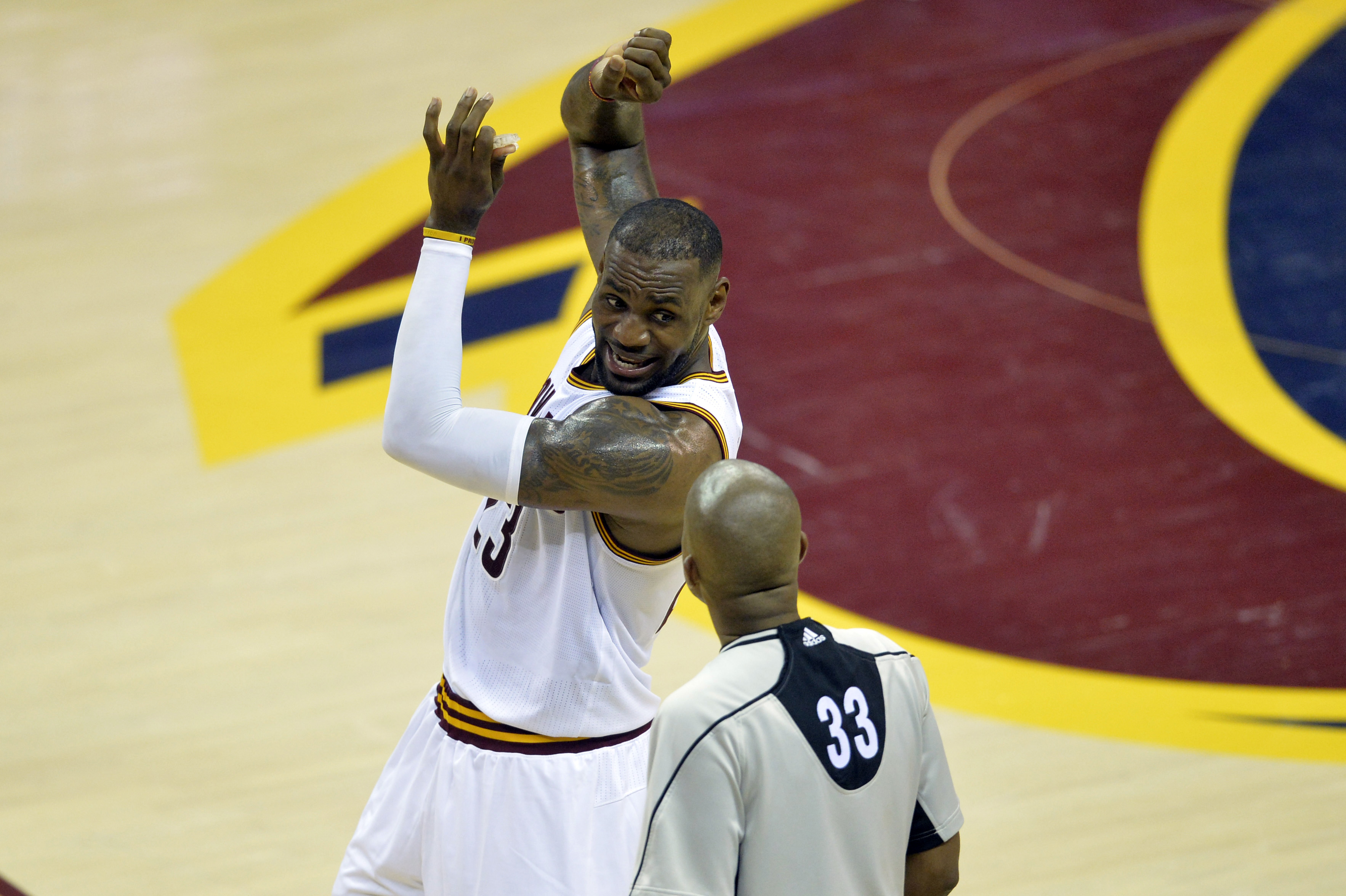![NBA: Playoffs-Golden State Warriors at Portland Trail Blazers [image : 84622004]](http://www.gannett-cdn.com/media/2016/05/19/USATODAY/USATODAY/635992784496443753-USATSI-9288952.jpg)
It’s human nature to focus on the NBA playoff call that was missed or incorrectly called by a referee, especially in a game with high stakes and high pressure.
And NBA referees have had their share of scrutiny during the playoffs, from the final 13.5 seconds of Game 2 between Oklahoma City and San Antonio to James Harden’s pushoff that wasn’t called in Game 3 against Golden State to Russell Westbrook’s travel that wasn’t called in Game 1 against Golden State.
But this is what the NBA wants you to know: NBA referees are incredibly accurate and get way more calls correct than incorrect, and the league publishes the Last Two Minute Reports in the name of transparency and education despite criticism from coaches, players and fans.
“One of the things we know internally because we study this is how good referees really are – how good they are compared to all other sports and basketball everywhere else,” NBA executive vice president of basketball operations Kiki VanDeWeghe told USA TODAY Sports. “We’re very confident that these guys are the best in the world, and they really are phenomenal.”
![NBA admits mistake at not calling Russell Westbrook for traveling in Game 1 [oembed : 84622340] [oembed : 84622340] [oembed : 84622340] [oembed : 84622340] [oembed : 84622340] [oembed : 84622340] [oembed : 84622340] [oembed : 84622340]](/Portals/_default/Skins/PrestoLegacy/CommonCss/images/smartembed.png) In a difficult sport to officiate, the NBA acknowledges both incorrect and correct calls, and the league is pleased with the data. The Last Two Minute Reports, which are posted online daily for games that that are within five points at the two-minute or go into overtime, detail correct calls, incorrect calls, incorrect non-calls and correct non-calls on all whistles and notable non-calls.
In a difficult sport to officiate, the NBA acknowledges both incorrect and correct calls, and the league is pleased with the data. The Last Two Minute Reports, which are posted online daily for games that that are within five points at the two-minute or go into overtime, detail correct calls, incorrect calls, incorrect non-calls and correct non-calls on all whistles and notable non-calls.
According to the NBA, referees make the right call 96.2% of the time on whistled plays and are 87.2% accurate on all plays, including no-calls, on more than 500 reviewed plays during the playoffs.
During the regular season, refs were correct 95.7% on whistled plays and 88.6% accurate on all plays, including non-calls, on more than 6,000 reviewed situations during the regular season.
“They’re unbelievably good at what they do,” VanDeWeghe said. “To me and Adam (Silver, NBA commissioner) and everybody here, why wouldn’t we share the information with everybody?”
Sharing that information has resulted in some NBA coaches and players – Steve Kerr, Gregg Popovich, Dwyane Wade – to question the value of the process. Of course, coaches, players and front-office staff get full-game officiating reports a few days after each game.
![Officiating report: Five missed calls in last 13.5 seconds of Spurs-Thunder [oembed : 84622300] [oembed : 84622300] [oembed : 84622300] [oembed : 84622300] [oembed : 84622300] [oembed : 84622300] [oembed : 84622300] [oembed : 84622300]](/Portals/_default/Skins/PrestoLegacy/CommonCss/images/smartembed.png)
As the league explained when it first announced in 2015 it would release the Last Two Minute Reports for games, it disseminates that information for transparency and education.
VanDeWeghe reinforced that in a conversation on Wednesday.
“We’re, at times, internally our toughest critic,” VanDeWeghe said. “But we want our fans to understand, we want our players and teams to understand. The idea is in these close games we want to share everything. We want to be fully transparent on the ones we missed and certainly the ones we do well on.
“Adam is a big believer in full transparency, and in a big believer in education. Our fans want to know as well. They want to understand why a call was made, what the rule was and how we viewed it. Was it correct or incorrect?”
Here’s another fact that is overlooked. Before the release of the Last Two Minute Reports, the league sent out releases when there was an incorrect call or incorrect non-call, and refs were only singled out for their errors. With the reports, the correct calls are also noted, something that wasn’t done previously.
The Westbrook travel or Dion Waiters elbow while taking ball out-of-bounds get attention because infractions weren’t called.
But take the May 11 report from the Toronto-Miami game. Sixteen plays were reviewed – just one was the incorrect call and one was an incorrect non-call. On the same day in the Portland-Golden State game, 13 calls reviewed by the NBA were correct calls or correct non-calls.
Producing the Last Two Minute Reports is a detailed process. Game reviewers flag plays. Former referees grade the plays. Referee managers examine the plays and VanDeWeghe makes a final decision: correct call, correct non-call, incorrect call, incorrect non-call.
“There are multiple layers of checks and balances,” VanDeWeghe said. “When you see a L2M, every single call has been looked at multiple times. One of the interesting things we do in this and day age of technology, we have eight or nine different angles to look at calls. The referees only have one. We’re utilizing slow motion. Sometimes, you have to run it back three, four times to see what happens.
“It gives you an indication of how good these guys are. They can see these things in real-time.”
![sports-itunes-nba [embed : 71636928]](/Portals/_default/Skins/PrestoLegacy/CommonCss/images/embed.jpg)
![Going inside the Golden State Warriors by NBA A to Z [oembed : 84676248] [oembed : 84676248]](/Portals/_default/Skins/PrestoLegacy/CommonCss/images/smartembed.png)


